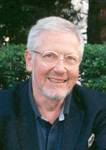
Koreny 2004
“Hieronymus Bosch – Überlegungen zu Stil und Chronologie – Prolegomena zu einer Sichtung des Oeuvres” (Fritz Koreny) 2004
[in: Jahrbuch des Kunsthistorischen Museums Wien – Band 4/5 – 2002/2003. Verlag Philipp von Zabern, Mainz am Rhein, 2004, pp. 46-75]
In the past, the attribution and dating of Bosch’s oeuvre have given rise to a divergence of opinions. In recent years, though, art-historical research has been enriched by the results of dendrochronological analysis and continuously improving infrared reflectography. Today, scholars have at their disposal a much broader spectrum of information than ever before. Relying on the results of infrared reflectography, two forms of underdrawing in Bosch’s works can be identified. In the first type a broad brush was used, whereas in the second type the artist used a fine brush, and moreover, the hatching in this second type runs predominantly from the upper left to lower right, thus indicating that the artist was left-handed.
The different types of underdrawing correspond to equally varied characteristics of execution and to different principles of composition. The representation of trees and landscapes also differs. Based on this analysis of style and underdrawing, Koreny argues that the Pedlar triptych (of which the central panel has been lost), the Lisbon St Anthony triptych, the Ghent St Hieronymus, the Vienna Carrying of the Cross, the Venice Visions of the Hereafter wings, and the Prado Haywain triptych were painted not by Bosch, but by a talented, left-handed painter who was half a generation younger than Bosch and who worked closely with the master from about 1500 on. Koreny suggests that this could be the discipulo mentioned by Felipe de Guevara (ca. 1560). This artist, coined ‘Haywain Master’ (Heuwagen-Meister) by Koreny, was also responsible for the overpainting of the patron in Bosch’s St John the Baptist (Madrid).
Koreny’s analysis of the paintings attributed to Bosch also has repercussions on the drawings attributed to him. The Owls’ Nest (Rotterdam), the Tree Man (Vienna), and The Field Has Eyes, the Wood Has Ears (Berlin) are definitely by Bosch’s own hand. These three drawings offer a sound basis for further attributions. Koreny argues that the sketch of two Pharisees (New York) and the sketch of four studies of St Anthony (Paris) are authentic Bosch, whereas the Drolerie with Beehive (Vienna) and the Entombment (Londen) were produced by the Haywain Master. Furthermore, two drawings that have hitherto attracted little attention are attributed to Bosch by Koreny: Gathering of the Birds (Berlin) and Battle of the Birds and Mammals (Berlin).
[explicit 5th June 2020]